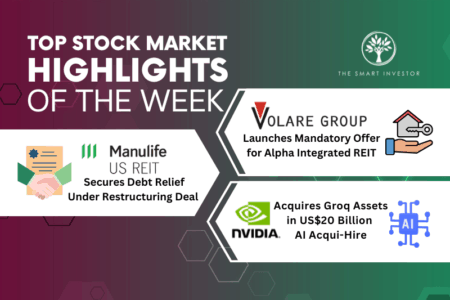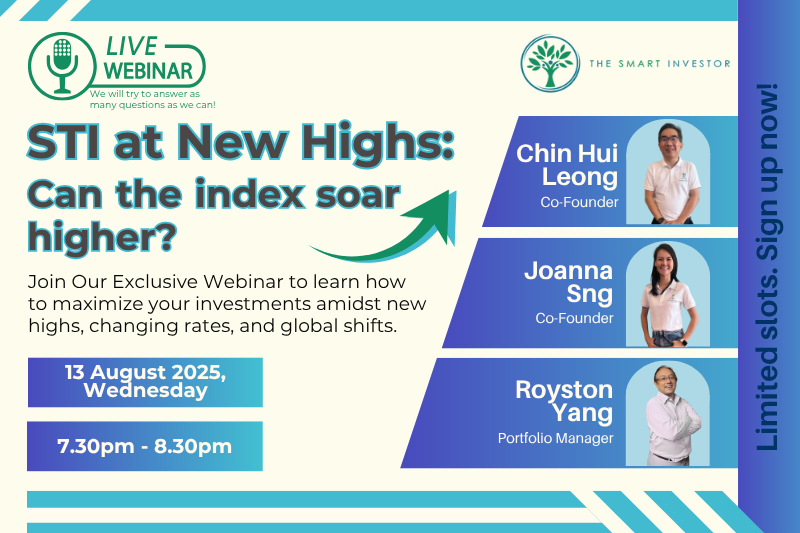Artificial intelligence (AI) is no longer the next big thing – it is the big thing.
It is now the driver behind everything, from smarter mobile phone features to trillion-dollar transactions.
And at the center of it all stands NVIDIA (NASDAQ: NVDA), the firm most people associate AI with.
However, the AI revolution is not a one-company story.
These three tech giants are quietly building the groundworks for the next wave of innovations.
While they may not make as many headlines, their contributions run deep.
TSMC: The Chipmaker Behind the AI Boom
Taiwan Semiconductor Manufacturing Company, TSMC (TPE: 2330) is currently the largest contract chip manufacturer in the world.
Known for focusing solely on producing chips for clients, TSMC has partnered with many businesses worldwide and that includes big names like Apple (NASDAQ: AAPL), Nvidia, and AMD (NASDAQ: AMD).
The chipmaker’s advanced 3-nanometre and 5-nanometre process nodes power everything from smartphones to data-centre chips, including Apple’s iPhone.
Apple remains TSMC’s biggest customer, accounting for 22% of total revenue.
With the ever-evolving AI, demand for high-performance computing (HPC) chips increased rapidly, and that played right into TSMC’s strength.
The Taiwanese chipmaker delivered strong results in 2024, hitting a record high of NT$2,894.31 billion (US$94.5 billion) in total revenue, a 34% year-on-year (YoY) increase.
This strong growth trend has carried over into 2025, when revenue is forecast to rise by a further “mid-30%” range.
The company also plans to expand its manufacturing capacity with a capital expenditure budget between US$40 billion and US$42 billion.
These funds will mainly be directed to its 3-nanometre and 2-nanometre production nodes, the key to powering next-generation AI chips.
According to Morningstar Equity Analyst Phelix Lee, AI chips made up 15% of TSMC’s revenue in 2024 and are projected to reach 50% by 2029.
Profitability has been rising too.
The chip giant’s gross profit margin improved from 54.4% in 2023 to 56.1% 2024, with expectations of further gains over the next few years.
Driven by higher shipments and rising average selling prices, the company’s leadership in the global foundry industry has strengthened.
The Taiwanese chipmaker’s market share jumped to over 70% in 2Q2025.
Takeaway: TSMC is the “arms supplier” to the AI race, producing chips that every company depends on.
Alphabet: AI Everywhere in Google’s Ecosystem
At Alphabet (NASDAQ: GOOGL), AI is the core of its ecosystem, embedded into every part of the business.
Through its own AI models such as Gemini, AI is in platforms used by billions of people everyday, from Google Search to YouTube and Android.
Alphabet’s strength lies in how it uses its different applications to generate multiple streams of income.
Accounting for US$264.6 billion of its US$350 billion in total revenue in 2024, advertising remains its main source of income.
Google ads recorded an 11% YoY increase from US$237.9 billion in 2023, representing a solid double-digit growth for its scale.
While advertising remains the bread and butter, Google Cloud is becoming an increasingly important growth engine.
Google Cloud contributed US$43.2 billion in 2024, up 30.6% year on year, and accounting for roughly 12% of the total revenue.
Not only does this segment provide compute power to support enterprise customers, it also serves as a conduit for Google to sell its Gemini and AI services.
Alphabet has also been investing in research and development (R&D), with spending rising from US$45.4 billion in 2023 to US$49.3 billion in 2024.
As a percentage of total revenue, though, it declined slightly from 15% in 2023 to 14% in 2024, reflecting stronger top-line growth.
Translation: Alphabet’s revenue growth allows it to spend more in absolute dollars into R&D which in turn gets re-invested into developing better AI models.
Better AI models can, in turn, can drive further topline growth, creating a virtuous cycle.
Meta Platforms: AI-Powered Social Networks and Virtual Worlds
With a mission to connect people through technology, Meta (NASDAQ: META) has become the consumer face of AI.
Think Facebook, Instagram, and Whatsapp, Meta utilises AI to personalise content on these platforms by analysing the users’ interest and interactions.
Meta AI assistant is now integrated into its communication platforms, and even its Ray-Ban Meta glasses, fueling creativity and user interactions.
To keep providing users with new experiences, and offer immersive and useful platforms, the company poured substantial resources into AI infrastructure and its metaverse ambitions.
For 2023, Meta spent US$27.10 billion in capital expenditure with the bulk of it going into data centres, servers, and network equipment.
Maintaining this focus in 2024, US$37.3 billion capex was allocated into the same area – a near-38% YoY increase.
Based on the revenue growth, these investments paid off.
Revenue rose 22% YoY to US$164.50 billion in 2024.
Despite being in a highly competitive industry, Meta has maintained strong user engagement, which in turn also helped boost revenue.
Daily active people (DAP) grew from 3.19 billion in 2023 to 3.35 billion in 2024, reflecting its sustained platform appeal.
With robust revenue growth and tighter cost management, operating margin expanded to over 42% in 2024, up from under 35% a year earlier.
Free cash flow (FCF) also strengthened, rising from US$44 billion to over US$54 billion over the same period.
A sign not only of higher earnings but also how effective Meta is turning its AI investments into profitability.
That said, FCF has fallen to US$20 billion for 1H2025, down from US$24 billion in 1H2024.
Takeaway: Meta is powering today’s revenue with AI while building tomorrow’s platforms.
What This Means for Investors
The AI boom extends far beyond Nvidia’s chips.
Nvidia may build the hardware that powers AI, but other parts of the industry are just as important.
Infrastructure players like TSMC enable the manufacturing of advanced semiconductors.
Platform leaders such as Alphabet provide the computing backbone and cloud capabilities for AI development.
Ecosystem builders like Meta integrate AI into user experiences across billions of consumers around the world and together, they all build the foundation of the AI economy.
Investing across the layers can offer more exposure to the long-term development of artificial intelligence with increased resilience.
Get Smart: Capture the Wider AI Ecosystem
The next technology wave won’t come from one company alone.
It will be the result of the entire industry working together.
Looking beyond NVIDIA could provide investors with equally powerful opportunities among the companies quietly building the wider AI ecosystem.
Generative AI is reshaping the stock market, but not in the way most investors think. It’s not just about which companies are using AI. It’s about how they’re using it to unlock new revenue, dominate their markets, and quietly reshape the business world. Our latest FREE report “How GenAI is Reshaping the Stock Market” breaks the hype down, so you can invest with greater clarity and confidence. Click here to download your copy today.
Follow us on Facebook, Instagram and Telegram for the latest investing news and analyses!
Disclosure: Charlyn owns shares in Apple.






